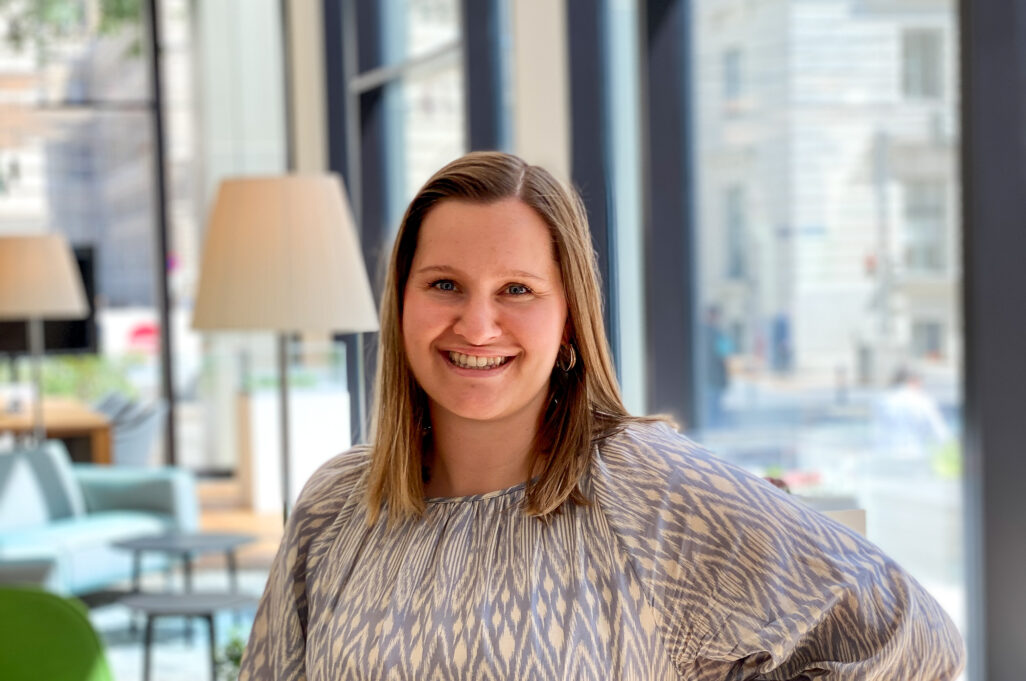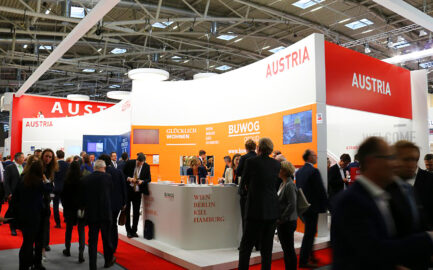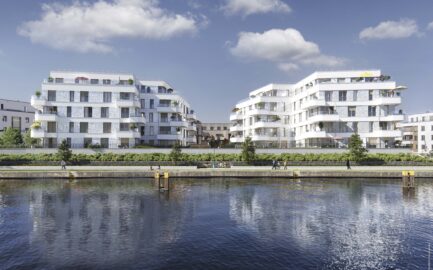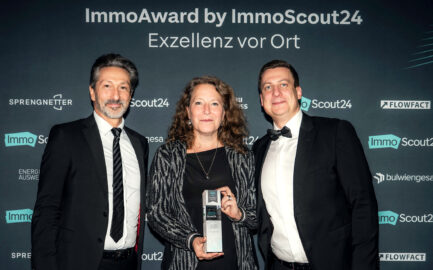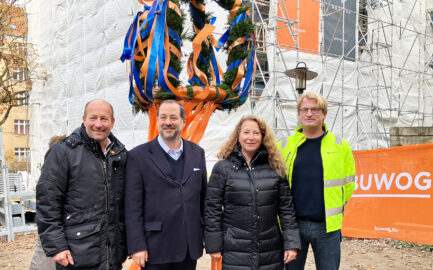“Digitalisation in construction is bringing a new approach to collaboration between project teams that I see the future in.”
In our series “BUWOG, up close and personal”, we introduce people who are working on current BUWOG projects and on issues that pertain to the future. They are all united by the aim of bringing BUWOG’s slogan of “happy living” to life. This time in our series we talk with Marlene Asamer. She is currently a trainee in project development at BUWOG and specialised in the area of Building Information Modelling.
Ms Asamer, you’re one of the first participants in the new BUWOG trainee programme. What makes the programme stand out from other training programmes?
Its aim is to integrate young professionals into the company on a permanent basis. In contrast to other apprenticeships, you don’t work towards a vocational qualification, but are prepared for a later job in the company during the 12 months. In the process, we trainees pass through a variety of departments in order to gain insight into the various activities, increase our knowledge and generate synergies between the departments.
What piqued your interest about the trainee programme at BUWOG?
It’s a special opportunity to obtain such broad insight into different departments in a company and to acquire important experience. The main focus of my trainee programme is Building Information Modelling. I definitely wanted to pursue my career in the direction of digitalisation in construction, as it is a new approach to collaboration between project teams that I see the future in.
In the construction industry, Building Information Modelling (BIM for short) is a digital method in the planning, execution and operating process. The basis for it is a virtual 3D building model that is enhanced with additional information. Based on the idea of “build digitally first”, the building is “pre-constructed” as a computer model prior to development.
What training and skills are needed to fill your position?
In my case, a certain basic understanding of BIM is a prerequisite. Relevant studies such as civil engineering or, in my case, architecture and my previous work as an architect naturally help to understand processes in project development. In general, you should be open to new processes and applications and enjoy engaging with digitalisation and innovations in the construction industry.
What are typical responsibilities in your everyday life at work?
Up to this point, mainly acquiring knowledge, working out the project basics and documentation, and gaining insight into project development processes. Apart from my core department of project development, I also work in land acquisition, construction management, warranty, controlling and sales. In my current job in property acquisition, I prepare site assessments and evaluations concerning the development capacity of properties. Here I can actively contribute to the “daily” business, because in my previous work as an architect I dealt quite a bit with building code issues.
What development steps still need to be taken in the real estate industry in the area of digitalisation?
In general, digitalisation offers a wide range of potential for the construction and real estate industry, which is far from exhausted. The industry urgently needs to dispense with decades-old processing patterns. BUWOG is on the right track here, relying heavily on Building Information Modelling to generate better cooperation among planners and implement integral working methods. This clearly sets us apart from the competition.
What’s next for you after the traineeship?
After this year, I will return to project development and strengthen the team as much as possible with my expertise. I’m very happy to have been able to learn so many new things and to be able to bring my own expertise to bear in the process, and I’m already looking forward to everything that still awaits me at BUWOG.
How did you actually come across BUWOG?
In my previous work as an architect, I had repeated contact with BUWOG. I wanted to further my training in the direction of Building Information Modelling and during my research I came across the job advertisement for the position of BIM trainee. The description sounded so exciting that I had to apply right away.
What’s important to you about BUWOG as an employer?
I haven’t been here very long, but the onboarding was really lovely and I already feel well integrated into the team.
The team spirit at BUWOG is very important and truly special. You can feel the positive atmosphere and that makes work fun. During the trainee programme, we also pay more attention to where our strengths lie and how they can be optimally used, and I think this individual approach is great.
As an architect, you’ve dealt intensively with spatial planning and the subject of housing. What does BUWOG’s theme of “happy living” mean to you personally?
Spaces have an enormous influence on our sense of well-being, which is why it’s a top priority for me to create spaces that convey a feeling of comfort. Whether it’s the design of individual living areas, common areas or the architecture of entire developments – the pandemic has once again made it clear to us how important it is to create pleasant spaces of retreat and places of coexistence where we feel at home. This is how we create the conditions for „happy living“.

